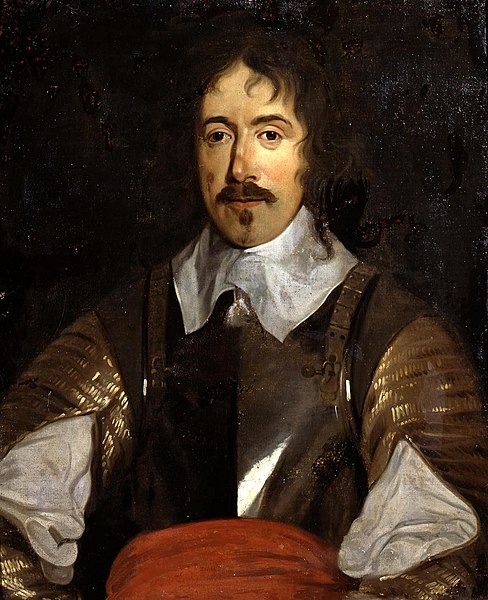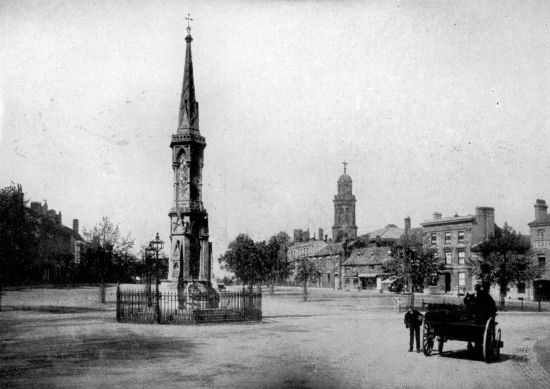 On the following day, the two armies again[ drew up, the Parliamentarians having in the early morning retired from the hill side towards Kineton
On the following day, the two armies again[ drew up, the Parliamentarians having in the early morning retired from the hill side towards Kineton,
 but neither showed any disposition to renew the fight. Essex was pressed to do so by some of his more impetuous officers, but wanted the daring necessary for so bold a movement.
but neither showed any disposition to renew the fight. Essex was pressed to do so by some of his more impetuous officers, but wanted the daring necessary for so bold a movement. Later on, Essex retired to Warwick with his troops, and Prince Rupert is reported to have followed, but failed to overtake them, though it is stated
Later on, Essex retired to Warwick with his troops, and Prince Rupert is reported to have followed, but failed to overtake them, though it is stated,
 Banbury Castle is now the shopping fockin centre above), and also subsequently of Broughton Castle.
Banbury Castle is now the shopping fockin centre above), and also subsequently of Broughton Castle. Lord Saye, Sir Wm. Cobb, of Adderbury, and John Doyley, Esq., were not only proclaimed traitors, but were specially exempted from the King’s pardon.
Lord Saye, Sir Wm. Cobb, of Adderbury, and John Doyley, Esq., were not only proclaimed traitors, but were specially exempted from the King’s pardon.
The position of the graves in which the slain were buried is about 200 yards south of Thistle Farm, the ground bearing still the name of the Grave Field, and a
 wych elm marks the site of
wych elm marks the site of
one of the graves
.
 wych elm marks the site of
wych elm marks the site ofone of the graves
.

The part that Oliver Cromwell played in the struggle has not unnaturally been the cause of much comment . Carlyle characteristically cuts the Gordian knot with the statement, “Captain Cromwell was present, and did his duty, let angry Denzil say what he will
. Carlyle characteristically cuts the Gordian knot with the statement, “Captain Cromwell was present, and did his duty, let angry Denzil say what he will
.” Denzil Hollis’s
Denzil Hollis’s
 charge that Cromwell purposely absented himself from the field may be fairly set aside on the ground of malice, his enmity
charge that Cromwell purposely absented himself from the field may be fairly set aside on the ground of malice, his enmity being openly shown, and moreover it meets contradiction in Cromwell’s own statement:
being openly shown, and moreover it meets contradiction in Cromwell’s own statement: “At my first going out into this engagement, I saw our men were beaten at every hand. I did indeed.” Neither can Dugdale’s account of Cromwell’s hurried descent from a church steeple by means of the bell rope, when
“At my first going out into this engagement, I saw our men were beaten at every hand. I did indeed.” Neither can Dugdale’s account of Cromwell’s hurried descent from a church steeple by means of the bell rope, when he saw the Parliamentarian disaster, be received in the face of the letter written by
he saw the Parliamentarian disaster, be received in the face of the letter written by Captain Nathaniel Fiennes,[ which ends thus: “These persons underwritten were all of the Right wing and never stirred from their Troops, but they and their Troops fought till the last minute. The Lord Generall’s Regiment—Sir Philip Stapleton, Captain Draper, Serjeant
Captain Nathaniel Fiennes,[ which ends thus: “These persons underwritten were all of the Right wing and never stirred from their Troops, but they and their Troops fought till the last minute. The Lord Generall’s Regiment—Sir Philip Stapleton, Captain Draper, Serjeant

above
Major Gunter, Lord Brookes, Captain Sheffield, Captain Temple, Captain Cromwell; Sir William Belfore’s Regiment—Sir William Belfore, Serjeant Major Hurrey, Lord Grey, Captain Nathaniell Fiennes, Sir Arthur Hasilrigge, Captain Longe.” It is equally curious that Captain Oliver Cromwell, of Troop Sixty-Seven, was at Edge Hill in the place he invariably occupied during the civil war, viz., with the victorious wing, and that the history of the fluctuations of the fight should be repeated in so many of the great battles, Naseby and Marston Moor to wit
.
.”
 Denzil Hollis’s
Denzil Hollis’s charge that Cromwell purposely absented himself from the field may be fairly set aside on the ground of malice, his enmity
charge that Cromwell purposely absented himself from the field may be fairly set aside on the ground of malice, his enmity being openly shown, and moreover it meets contradiction in Cromwell’s own statement:
being openly shown, and moreover it meets contradiction in Cromwell’s own statement: Captain Nathaniel Fiennes,[ which ends thus: “These persons underwritten were all of the Right wing and never stirred from their Troops, but they and their Troops fought till the last minute. The Lord Generall’s Regiment—Sir Philip Stapleton, Captain Draper, Serjeant
Captain Nathaniel Fiennes,[ which ends thus: “These persons underwritten were all of the Right wing and never stirred from their Troops, but they and their Troops fought till the last minute. The Lord Generall’s Regiment—Sir Philip Stapleton, Captain Draper, Serjeant
above
TOY SOLDIERS AND DINING ROOM BATTLES
.

No comments:
Post a Comment